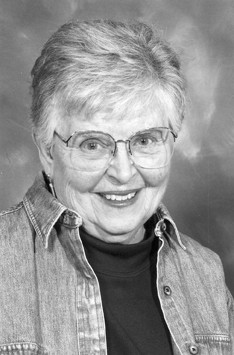Rabbitbrush Rambler: Coexisting

Senator Elizabeth Warren’s DNA test shows a tiny smidgen of Native American. Mine would show English, Scottish, German, French, and who knows what else? Maybe Neanderthal. So what?
With the arrival of colonists in New Mexico in 1598, many who came north from Old Mexico had the mixed bloodlines of mestizos. Along the Rio Grande and everywhere else in the Southwest, more mixing occurred with various native tribes. In the mix there probably even were a few Crypto-Jews who had fled the Inquisition and then had melded into the population in the New World.
The story of the Valley’s early settlements is primarily about Spanish-speaking people, not necessarily with pure Spanish blood, who moved from northern New Mexico’s Taos and Rio Arriba Counties into the previously unsettled San Luis Valley. Once they got here, they had to cooperate as best they could, regardless of economic and social status, flee, or go back home.
In short, they had to coexist or quit.
Even one of the leaders on the Conejos Grant was an American Army veteran, Lafayette Head from Missouri, who had married an Hispanic widow lady and had become a Mexican citizen. Or consider Kit Carson who had two Indian wives before marrying Josefa at Taos, or the French Canadian Charles (Carlos) Beaubien, the owner of the Sangre de Cristo Land Grant.
In 1852 a mixture of officers and soldiers from New England were building Fort Massachusetts, and then the military, including some German immigrants who had joined the U.S. Army, moved to the new location at Fort Garland. When the Civil War began, the sutler was John Francisco with Confederate sympathies, while many Spanish-speaking recruits at this Union fort had homes in the Valley. Black Buffalo Soldiers served at this fort, too.
There also were a couple of storekeepers at Costilla and Conejos who probably spoke German better than Spanish or English, and a few former trappers like Tom Boggs who talked mountain man better than anything else, and a Catholic clergyman at Costilla who used Latin with a French accent.
All within the first decade of settlement!
A very important change in 1860 was the creation of Colorado Territory bringing white officials, and an Indian agency bringing red visitors. Another administrative change was the creation of Saguache County (think Russian immigrant Jew Otto Mears) and mixed agriculturists of many varieties into the northern part of the Valley. Another noteworthy event was the sale of the Sangre de Cristo Land Grant to a real estate investor, the former territorial-governor William Gilpin, who was born in Pennsylvania.
But, unfortunately, the Native Americans got kicked out.
During the war, the Homestead Act of 1862 had been passed. As soon as that conflict ended, many farmers in the States heeded Horace Greeley’s advice to “go West, young man, go West” and they did so in large numbers seeking land and water for cattle and crops, with a government land office at Del Norte crossing the T’s and dotting the I’s.
Also, by the mid-1800s many immigrants arrived alone or with families had fled adverse agricultural, economic, and political conditions in their former homelands in Northern Europe and had come to America. By the early 1870s, thanks to the new northern rail route, Denver became a destination for émigrés, many of whom continued on down to Southern Colorado’s San Luis Valley.
In the 1870s, Germans were the most numerous of all newcomers in Colorado. They brought family names that remain an important part of the Valley’s heritage. Among other newcomers were Swedish families who acquired land at the former Lucero Plaza and called their neighborhood Swede Lane. A few Norwegians came too.
The mineral discovery at Summitville gave work to many of these newcomers in the early1870s, but some were performing traditional skilled occupations, farming, and business enterprises. In 1878 the arrival of Mormons, many of whom were Scandinavian, also contributed to the mix of cultures.
The most dramatic change from the old Valley to the new, though, was the construction and arrival of the D&RG in 1878 at the new town of Alamosa, which was the hub of transportation, employment, commerce, and a mixture of various lifestyles, as it still is.
Soon, transformation of the Valley’s agriculture occurred with the widespread drilling of artesian wells, large and small, with a rapid expansion of farming and of farmers. In the 1880s and 1890s, the Valley was recognized as Colorado’s most important artesian basin. Soon, construction of canals for diversion of irrigation water followed, even by an insurance company. Next, reservoirs were being proposed, one of which hired Bulgarian workers. Japanese farmers came to Conejos and Costilla Counties, and Lebanese merchants joined the mix.
The Valley has always attracted a variety of coexisting cultures and ethnic groups. Call it America.



